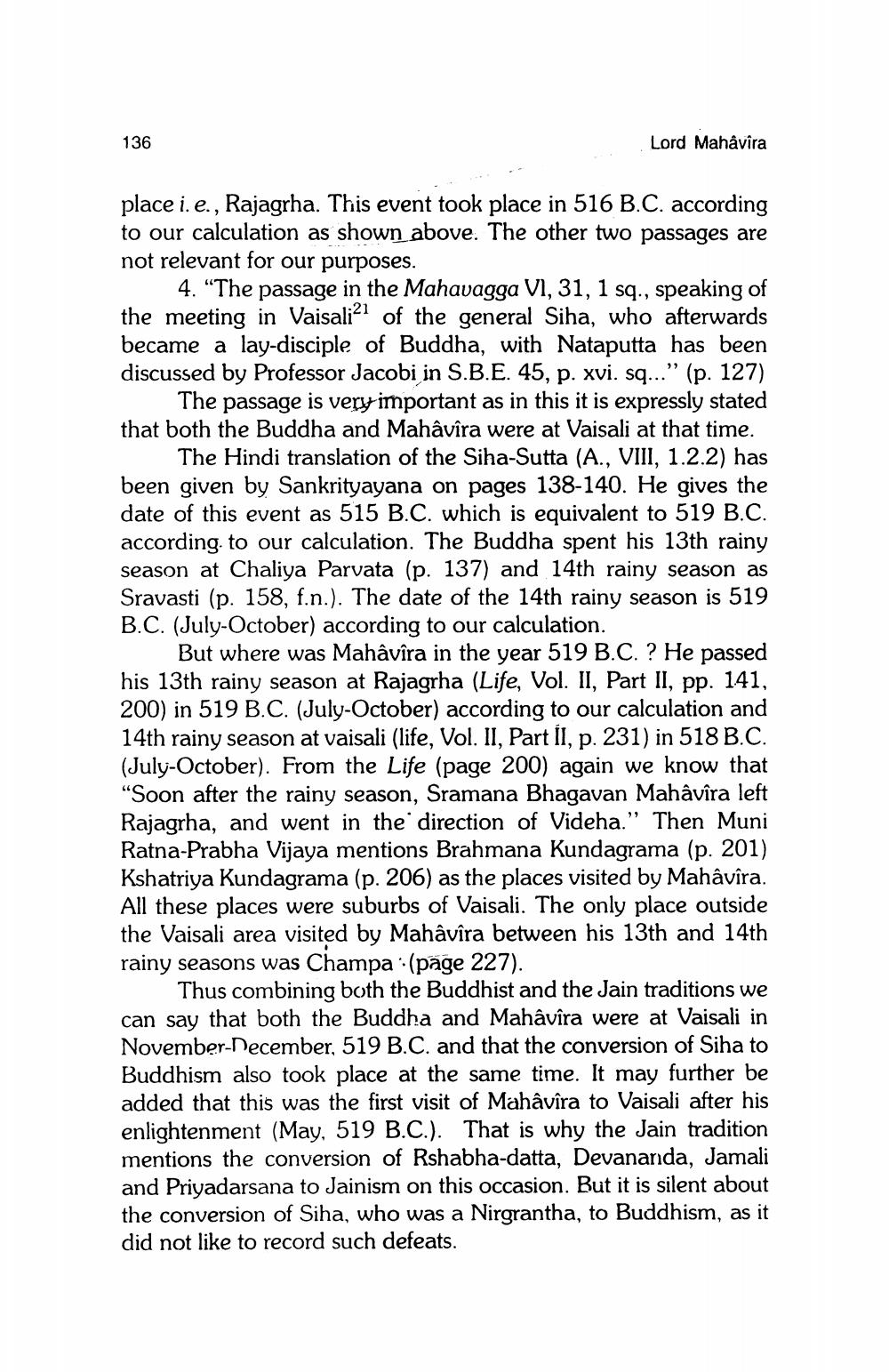________________
136
Lord Mahavira
place i.e., Rajagrha. This event took place in 516 B.C. according to our calculation as shown above. The other two passages are not relevant for our purposes.
4. “The passage in the Mahavagga VI, 31, 1 sq., speaking of the meeting in Vaisali2l of the general Siha, who afterwards became a lay-disciple of Buddha, with Nataputta has been discussed by Professor Jacobi in S.B.E. 45, p. xvi. sq...” (p. 127)
The passage is very important as in this it is expressly stated that both the Buddha and Mahâvîra were at Vaisali at that time.
The Hindi translation of the Siha-Sutta (A., VIII, 1.2.2) has been given by Sankrityayana on pages 138-140. He gives the date of this event as 515 B.C. which is equivalent to 519 B.C. according to our calculation. The Buddha spent his 13th rainy season at Chaliya Parvata (p. 137) and 14th rainy season as Sravasti (p. 158, f.n.). The date of the 14th rainy season is 519 B.C. (July-October) according to our calculation.
But where was Mahâvîra in the year 519 B.C. ? He passed his 13th rainy season at Rajagrha (Life, Vol. II, Part II, pp. 141, 200) in 519 B.C. (July-October) according to our calculation and 14th rainy season at vaisali (life, Vol. II, Part II, p. 231) in 518 B.C. (July-October). From the Life (page 200) again we know that “Soon after the rainy season, Sramana Bhagavan Mahâvîra left Rajagrha, and went in the direction of Videha." Then Muni Ratna-Prabha Vijaya mentions Brahmana Kundagrama (p. 201) Kshatriya Kundagrama (p. 206) as the places visited by Mahâvîra. All these places were suburbs of Vaisali. The only place outside the Vaisali area visited by Mahâvîra between his 13th and 14th rainy seasons was Champa :(page 227).
Thus combining both the Buddhist and the Jain traditions we can say that both the Buddha and Mahâvîra were at Vaisali in November December, 519 B.C. and that the conversion of Siha to Buddhism also took place at the same time. It may further be added that this was the first visit of Mahâvîra to Vaisali after his enlightenment (May, 519 B.C.). That is why the Jain tradition mentions the conversion of Rshabha-datta, Devananda, Jamali and Priyadarsana to Jainism on this occasion. But it is silent about the conversion of Siha, who was a Nirgrantha, to Buddhism, as it did not like to record such defeats.




